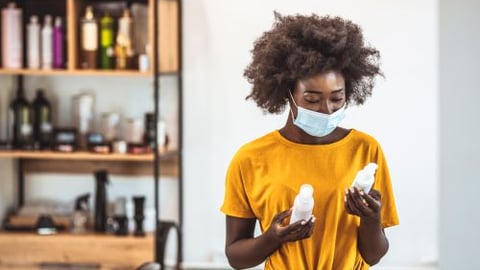Buying into the CX Mind Shift: Reimagining Customer Experience for a Post-COVID-19 World
The dramatic spread of COVID-19 around the globe has disrupted lives, communities, businesses and national economies on a massive scale. With populations in lockdown, national borders closed, and supply chains disrupted, the CPG industry has found itself operating in unchartered territory — one where dealing with daily challenges is very much the order of the day.
For CPG manufacturers, managing real-time supply and demand chain issues to support customers during the crisis has inspired new ways of working, innovative thinking and super-fast decision-making.
As a first priority, manufacturers have acted fast to protect employees and keep their workforces safe, resilient and operational. Hand in hand with this, many are co-collaborating with competitors to maintain the supply of essential products to stricken populations.
Becoming a brand with purpose
For some brands, sacrificing short term gains in favor of helping society and people has seen them repurpose production lines – manufacturing everything from medical equipment and specialist protective clothing for front-line healthcare workers, to cleaning products and hand sanitizing gel.
Others have demonstrated care and connection through donations to charities, hospitals and community groups or the provision of delivery and support services to local populations. They’re also leveraging social media and online communities to inform consumers on how to stay safe and compliant with social distancing recommendations, while providing regular updates and news pulses.
Working together, they’ve demonstrated how the CPG industry can be a force for good that can deliver practical and empathetic responses at a time of crisis. But predicting what happens next — in the medium and long term — means that CPG manufacturers will need to keep their finger on the pulse of rapidly changing customer preferences.
Reimagining CX for a post-COVID 19 world
Consumer behaviors are changing rapidly as a result of COVID-19. What they buy, where they buy, how much they buy — and how often — is shifting at an unprecedented pace. As the immediate crisis unfolds, CPG manufacturers will need to keep pace with how consumer mindsets are changing to predict what the new normal will look like, once the immediate threat to public health subsides.
One thing is for sure. The impact of the crisis on consumer shopping behaviors has been immediate and includes:
- The panic buying and stockpiling of essential store cupboard items and household goods, both in-store and online, led to stockouts on certain lines, and an overstock of items in categories shoppers suddenly view as non-essential — like beauty, haircare and cosmetic lines
- A significant uptick in online shopping as consumers scrambled to secure grocery and other goods; demand for tinned and frozen goods escalated as did demand for pre-prepared meals, comfort foods and treats to cope with social isolation
- A return to known, trusted or favorite brands and store cupboard ingredients, with consumers showing limited inclination to experiment with new product lines
- An increase in demand for in-store pickups or home delivery services — with consumers heading direct to manufacturer websites to source product
- Changes to the frequency and basket size of both online and brick and mortar shopping trips
Initiating contingency plans in the response to these short-term changes is just the start. As manufacturers scramble to adapt product categories and inventory to deal with the immediate massive peaks and troughs in demand, they will simultaneously need to be preparing strategies to retain and support customers going forward.
Harnessing insights to predict future behaviors
Tracking how customer behaviors evolve will be key to ensuring that manufacturers can continue to impress and serve customers in the months ahead. For some consumers, the move to shopping directly with brands online may well become an established habit — so building capabilities and capacity to enable this will be key.
But once the crisis passes, the categories and products some consumers shop may revert to pre-crisis norms. For others, the how and where and frequency they shop may change again — with more frequent trips to local shops taking precedence over shopping at supermarkets.
Brands will need to ensure they are positioned appropriately in the channels where customers will be and ensure they have production plans in place to serve the new market situation. To achieve all this, brands will need to proactively analyze evolving consumer preferences and choices. Because these insights will ultimately impact which products they manufacture, how they engage with customers — and in which channels.
Harnessing experience insights for better & more informed business decisions
With the stakes this high, taking the guess work on what the future holds — and how buyer behaviors will evolve — is not an option. Many of today’s forward-thinking industry players are accelerating how they keep a real-time pulse on changing customer preferences and fusing this human experience (X) data with operational (O) data to track how consumers intend to shop and their future purchasing intent.
In this way, they’re gaining the granular insights that are needed to better direct supply chains, initiate new distribution and sourcing models, and boost how — and where — they communicate with consumers. In other words, they’ll be better positioned to plan which production and distribution lines to prioritize and how to implement logistics strategies that get product delivered closer to demand.
Sustaining wholesale & distributor channels
Consumers aren’t the only customers that CPG brands need to support and nurture. Alongside those restaurants, food outlets, hotels and local corner shops that are in lockdown, wholesale and distribution partners are also facing significant commercial disruption.
Providing practical support for those channel customers that are still operational will be vital — everything from initiating online and phone ordering services, to creating new product assortments based on availability and current demands.
To protect the channel and speed up recovery for businesses that are currently closed, CPG brands will need to test the sentiment of these customers — using these insights to co-devise recovery strategies that help them get back on their feet. Whether that’s providing free inventory, or credit schemes, or co-collaborating at a local level to launch schemes that support a post crisis bounce-back for these businesses.
As part of this process, sharing consumer insights and intelligence with these customers will be the key to building strong partnerships built on loyalty, mutual respect and a deep business understanding. By re-imaging CX, brands will be able to support these customers and build the capabilities they’ll need to accelerate preparations for the future.
Preparing for recovery
In the current pandemic, utilizing customer insights and feedback is the key to maintaining the operational agility that’s needed to endure the crisis — and serve all customers well.
By harnessing this data, CPG brands will be not only be well positioned to safeguard their business. They’ll also be well prepared to cope with evolving demand patterns as the crisis abates – identifying future potential opportunities to build deeper relationships with customers in every channel and boost long term brand affinity.
But as brands deal today’s challenges, they must also start preparing for what the future holds.
As a first step, keeping open communications with customers and consumers will be vital for understanding how their needs and behaviors continue to evolve and unfold. Similarly, embracing digital channels — like B2B and B2C commerce — to cope with the massive uptick in demand generated by the crisis will ensure that CPG brands are appropriately positioned to capture new shopping behaviors that become embedded as a lasting legacy of the current pandemic events.
Finally, pushing ahead to tear down the silos that prevent agility and enable a much deeper integration between the front and back office will facilitate the transparency and nimbleness that will be key going forward. Not only will this help CPG brands recover from the current crisis — it will also establish the foundations needed to be ready for the ‘new normal’ that emerges.
Javier Flores is global industry principal for consumer products industry at SAP Customer Experience.






